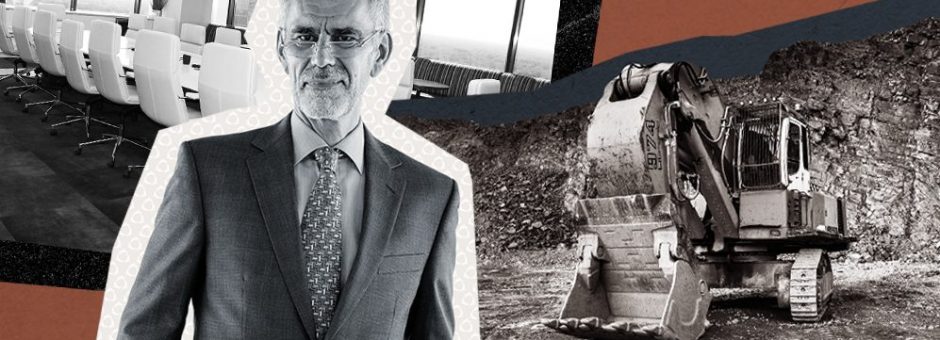If the first two decades of the 21st century can be defined as a period of change, the effect of COVID-19 has been to hasten this change. Executives in the mining industry will be charged with guiding their companies through an ongoing technological revolution while simultaneously prioritizing safety and sustainability, attracting new talent to the industry, and advocating for their company amid a host of environmental, supply chain and geopolitical x-factors. Recruiting leadership with the aptitudes and capabilities to meet this laundry list of challenges sounds like a tall order, but it’s helpful to remember that these demands are not unique to the mining industry and that capable leadership is, indeed, available for those that know where to look.
Technology in the Mining Industry
“There’s been a lot of talk around the long-term effects of the Covid-19 pandemic on the mining industry,” writes NRI Digital, “with a number of analysts and industry experts suggesting a silver lining of the current crisis – in as much as there could be one – is that it could be the spark needed to accelerate the adoption of smart technologies in the sector.”1
Automation, already central to safety and efficiency efforts in the mining industry, has become a key component in the suddenly important imperative to socially distance ourselves from one another. Top-level mining leadership must be confident in their ability to oversee the continued adoption of automated machinery and remote management centers, while being proponents of utilizing data to make actionable insights.
Oren, a joint venture between IBM and Shell2 positions itself as a one-stop shop for software, services, and digital solutions pertaining to the mining industry or, put another way, the ‘Amazon of digital mining’. Similarly, innovation hub Axora has launched an online Smart Mining resource centre which provides ‘industry insights and access to digital solutions and technologies to mining companies.”1
Whether through these platforms or other means, mining executives will do well to keep their finger on the pulse of ever-evolving technological solutions, ensuring that their companies don’t get left behind.
“I look at the current situation as a kind of accelerator,” says Mark Fraser, Axora’s account director for digital solutions and technologies to mining companies. “What some mining executives have said to me is, if you imagine what you thought the world was going to look like in a decade, you’re accelerating that time frame significantly. I think Covid-19 is a catalyst for innovation and modernization.”1
Mining Safety and Sustainability Leadership
Worker safety and environmental sustainability are obviously key objectives for any mining company and, here too, technology comes into play, both in the short and long term.
“Technology has long been seen as an aid in these challenges, with the past decade seeing steady uptake across automated equipment, remote operations centres, and industrial internet of things solutions in areas such as fleet management and air quality monitoring,” says NRI Digital. “These will still be present after the more immediate challenge posed by the pandemic.”2
While technology is undoubtedly a key component in mining safety efforts, so, too, is human preparedness and training. Key amongst the responsibilities of mining executives is the task of instilling a company culture that places safety first. This sounds cliché, but it’s true. What’s really needed is “mining companies where managers and employees do the right thing regarding safety, even when no one is watching them” writes Mining Journal.3
Recruiting for the Mining Industry
Just as they must advocate for their companies in the arena of public policy, mining executives must also work to promote their industry, and company, to a new generation of workers whose STEM talents will be critical to modernization.
In an article about STEM-recruitment in general, Forbes quotes Bill Berman of Berman Leadership Development, “Gen Z STEM talent wants two things: working on things that matter and having an impact. Make sure to give the candidate a sense of why your work is important and how they will really add value.”4
Safety and sustainability messaging will be key in battling negative stigmas that may exist regarding the mining industry. So will the promise of training, technological adaptation, and diversity of tasks. Partnerships with academic institutions will be an important part of fostering this development and should be top of mind for leadership.
Executive Leadership for the Mining Industry
As we have discussed, championing new technology, promoting safety and sustainability, and prioritizing recruitment will be important tasks for mining executives. Geopolitical uncertainty and supply chain disruptions must also be dealt with as they arise, adding to the responsibilities. While mining experience is an important factor, executives who are capable of meeting these challenges also exist in other industries. With this in mind, executive recruitment may be wise to consider capable individuals from other industries who possess these innate leadership attributes.
Cited Sources
1 “Q&A: Smart Technology and the Covid-19 Rebound with Axora – Mine: Issue 96: September 2020.” Mine, August 20, 2020. https://mine.nridigital.com/mine_sep20/smart_mining_axora
2 “IBM and Shell’s Mission to Create the Amazon of Digital Mining – Mine: Issue 96: September 2020.” Mine, August 20, 2020. https://mine.nridigital.com/mine_sep20/oren_ibm_shell.
3 Roberts, Richard. “Mining Safety Culture Built on Real Leadership.” Mining Journal, July 24, 2020. https://www.mining-journal.com/forum/opinion/1391634/mining-safety-culture-built-on-real-leadership
4 Panel®, Expert. “Council Post: 11 Creative Approaches To Attracting New STEM Talent.” Forbes. Forbes Magazine, August 17, 2020. https://www.forbes.com/sites/forbescoachescouncil/2020/08/14/11-creative-approaches-to-attracting-new-stem-talent/.

